What is a variable frequency drive and how does it work?
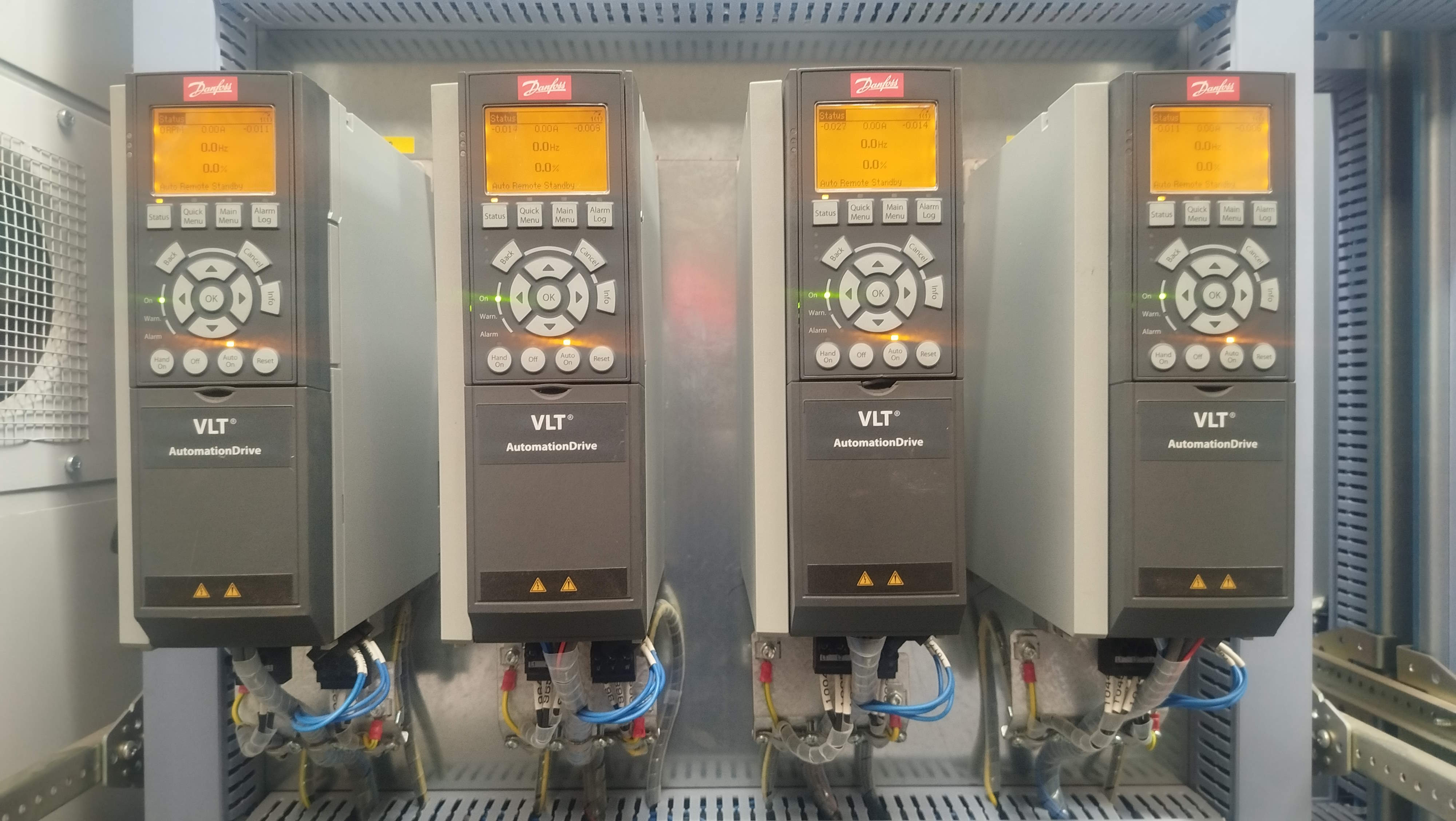
A variable frequency drive is a device used to control AC three phase induction electric motors; that is starting electric motors, stopping electric motors and more importantly varying the speed of the electric motor for smooth starting, stopping and running.
A Variable frequency drive is also called a variable speed drive. The term variable speed drive is a generic term that represents devices used to adjust the speed of electric motors or the equipment driven by the motor. These devices can be either electrical or mechanical.
Unlike other starters like soft starters and star-delta starters, the variable frequency drive can change the speed of the electric while the electric motor is running.
How does a variable frequency drive vary the speed of electric motors.
The variable frequency drive varies the speed of the electric motor by changing the frequency and voltage of electricity going to the electric motor.
In AC electricity, frequency affects the speed of the electric motor. High frequencies cause an electric motor to rotate fast whereas low frequencies cause an electric motor to run slow.
The variable frequency drive has three main parts; the first part that converts AC to DC, the second part that smooths the rectified DC and the last part that converts DC back to AC with an adjustable frequency.
VSD construction and working
A variable frequency drive consists of a converter (rectifier), a dc bus (filter) and lastly an inverter.
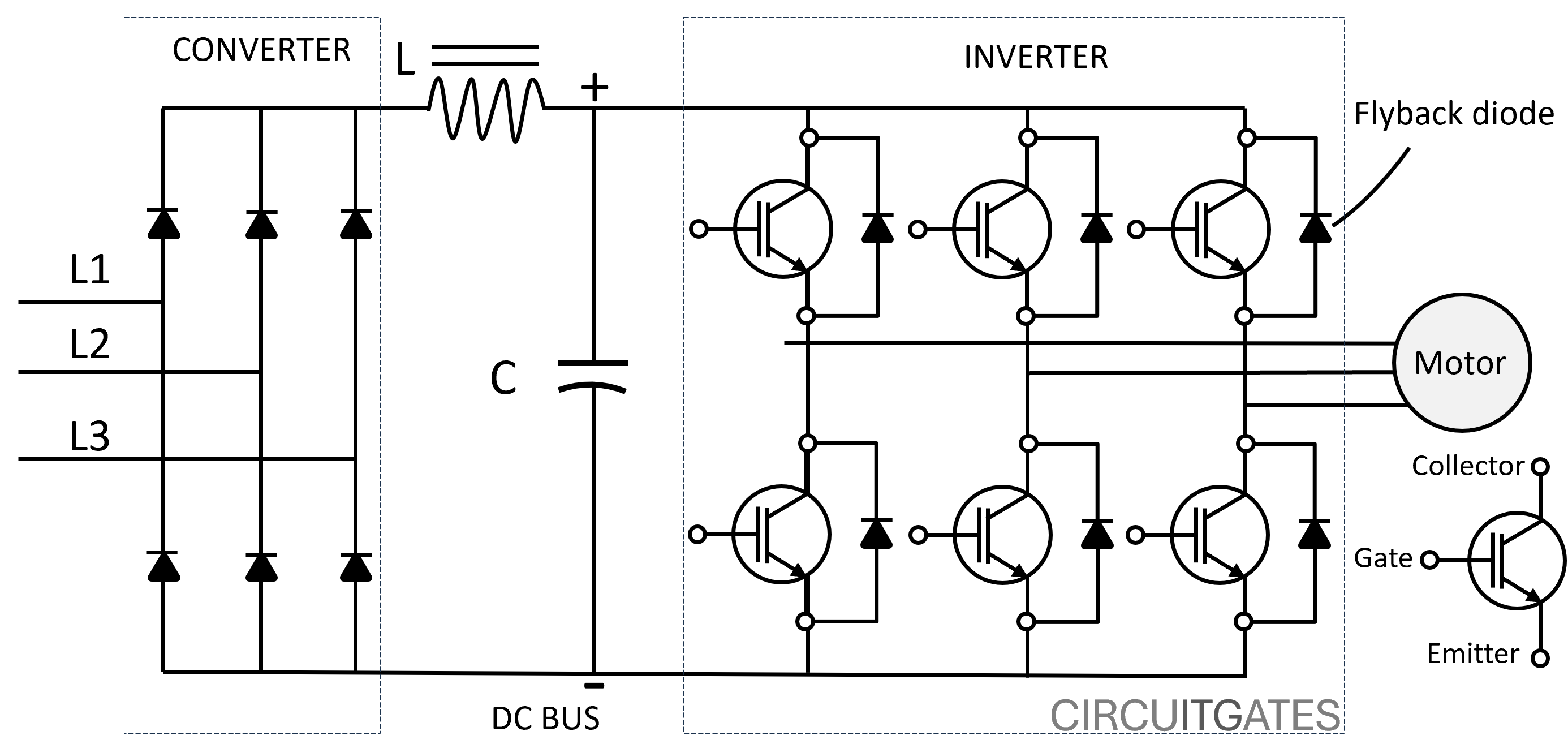
Converter/Rectifier
The rectifier is the part of the VFD that converts AC to DC. AC is electricity with voltage and current that varry in magnitude and change direction of flow, while DC has voltage and current that flow in the same direction and with a constant magnitude, as shown in the following diagram.
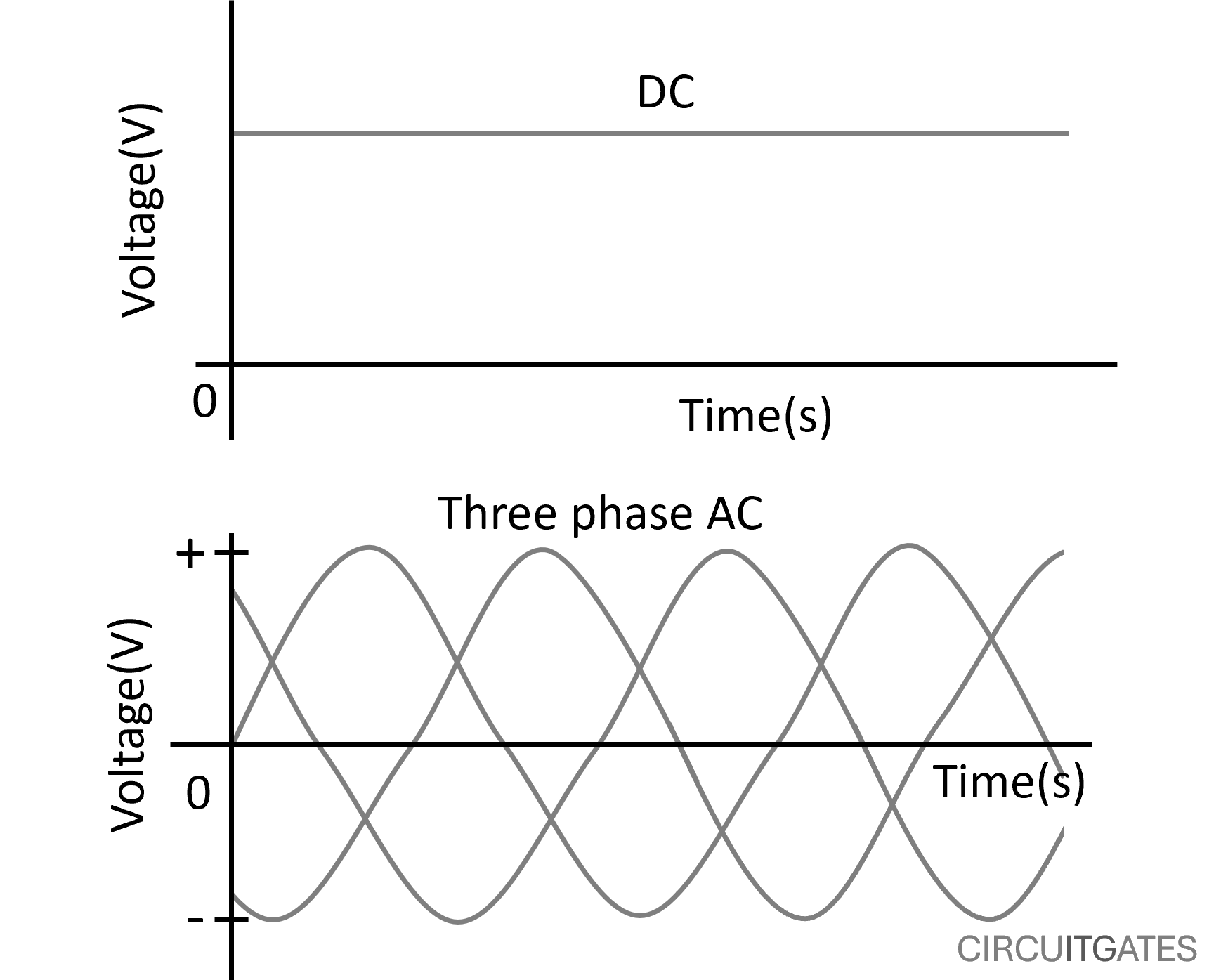
This part of the VFD consists of diodes that allow current to pass through them in one direction. These diodes are wired in a way that the output from the rectifier is voltage and current flowing in the same direction from an input of voltage and current that change direction, as shown in the following diagram.
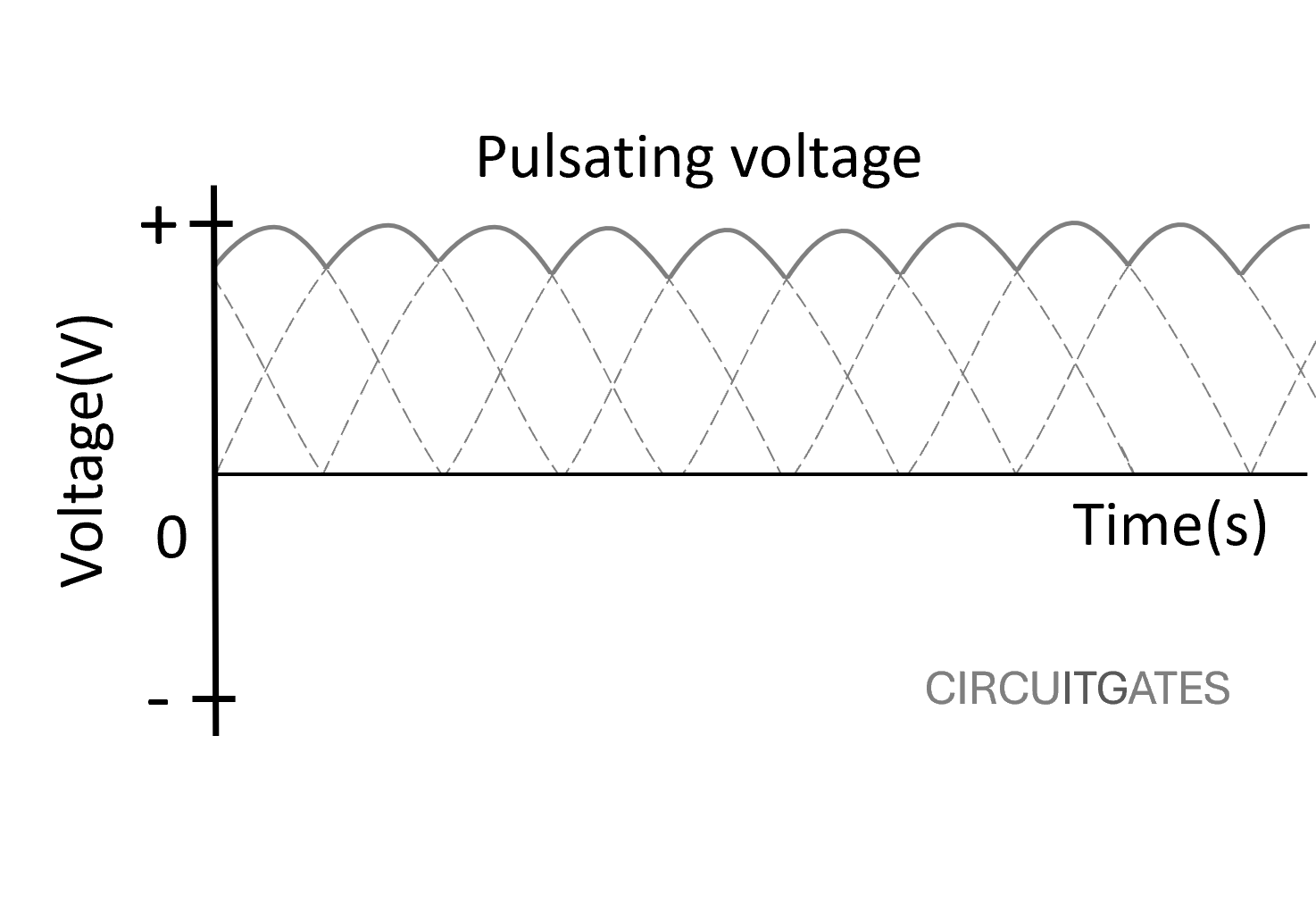
In single phase VFDs, a full wave diode rectifier can be used to convert AC and DC. In three-phase VFDs, we can connect each phase between two diodes facing the same side as shown in the first diagram.
The diodes after the phases of the three phases are joined together forming the DC live wire, and the other diodes before the three phases are joined together to form the DC neutral wire.
DC Bus - Filter
The output from the rectifier is voltage flowing in the same direction but varying in magnitude (pulsating voltage), since the rectifier only unidirect AC current and voltage to flow in the same direction.
The DC bus or filter is the part that smoothens the DC rectified voltage to produce a smooth DC voltage, as shown in the following diagram.
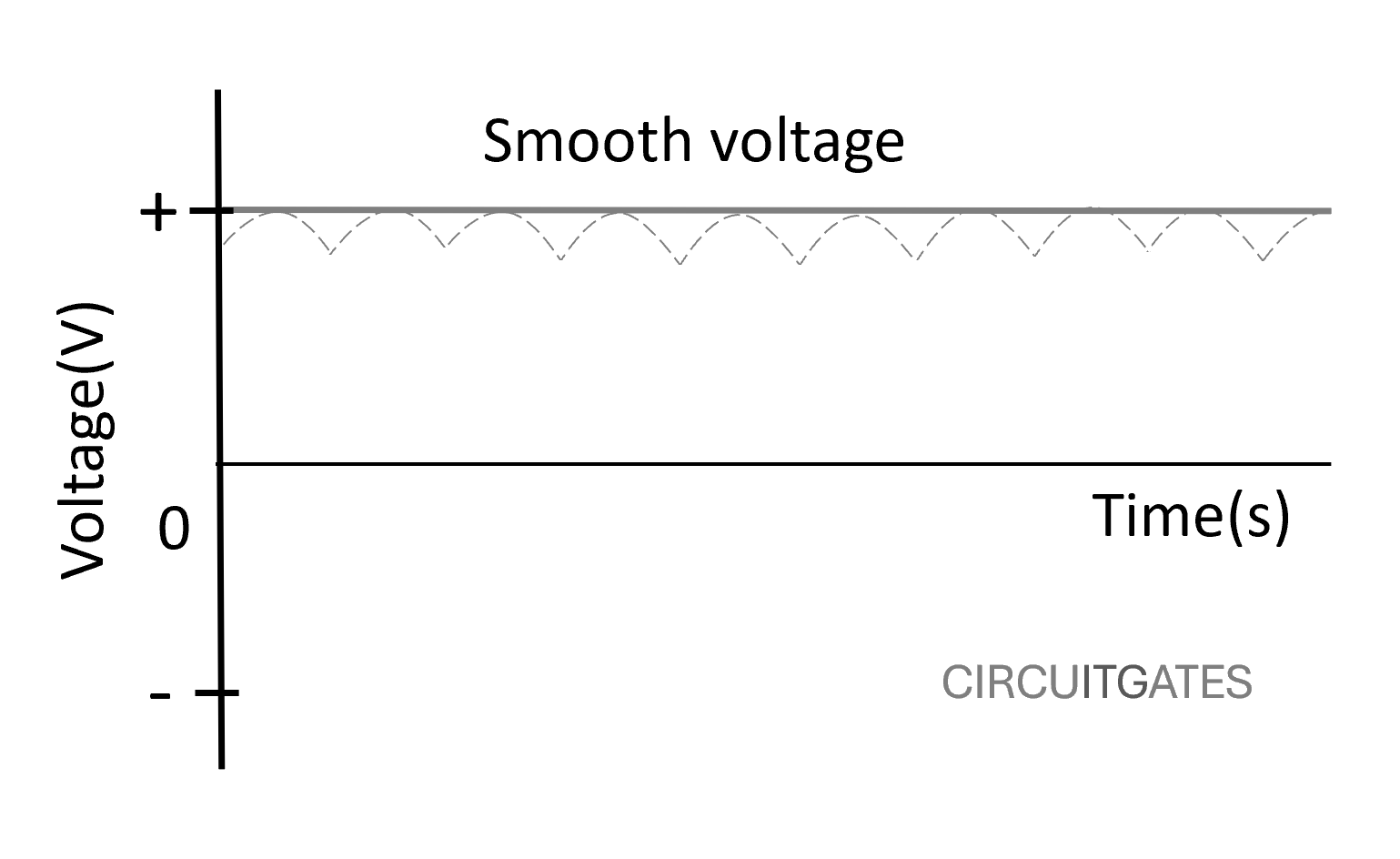
This part consists of devices such as capacitors that store electrical energy and release it when there are fluctuations in the voltage, producing a smooth dc voltage.
Inverter
The inverter is the part that converts DC back to AC but now in a way that its frequency can be varied between minimum and maximum values which enables the control of the speed of electric motors.
The modern inverter part usually consists of insulated gate bipolar transistors (IGBTs), that are well known for their abilities of switching ON and OFF several thousand times per second.
In the inverter part of VFDs, IGBTs are wired in the same way as the previous six diodes of three-phase VFDs. The IGBTs are also connected to the controller that tells them to switch on and off.
To invert DC to AC or to form every AC half cycle, the IGBTs are controlled to switch on and off several times with the pulses being small at the end and start of every cycle and increasing towards the middle of the cycle (pulse with modulation) as in the following diagram.
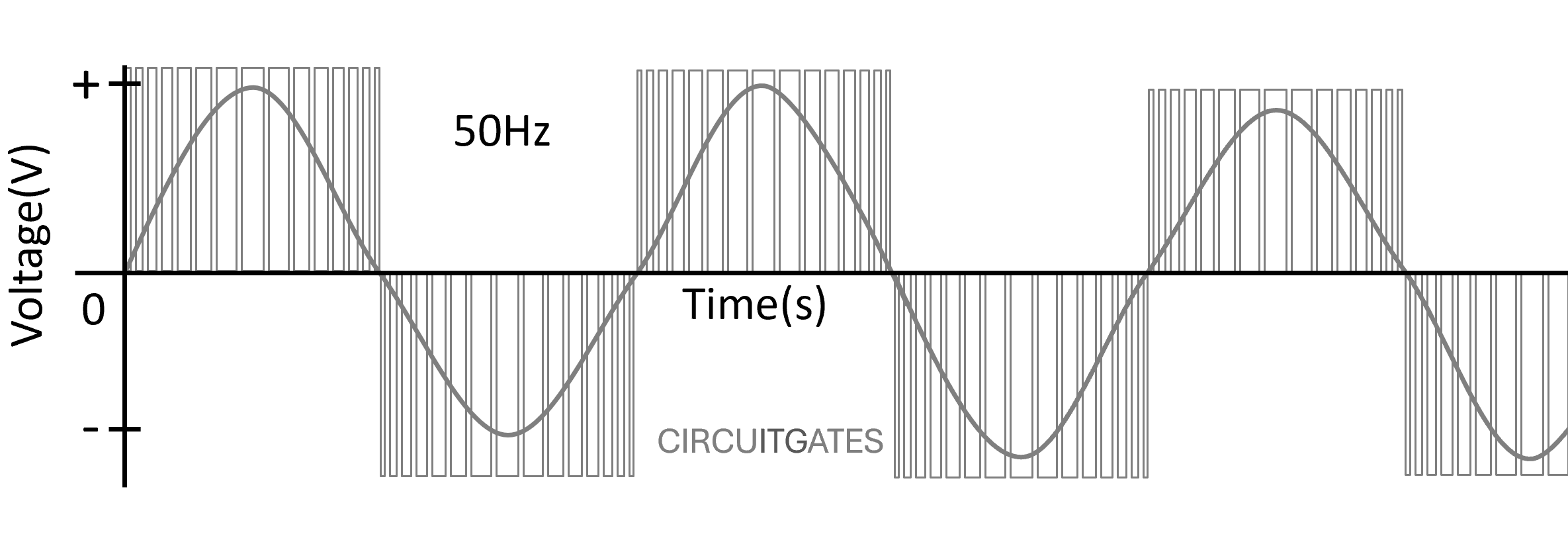
The frequency is then varied by changing the length of half cycles of AC voltage. Frequency is the number of cycle completed per second. When the length of half cycles or cycles is increased, the number of cycles in every second is reduced, thus reducing the frequency and speed of electric motors.
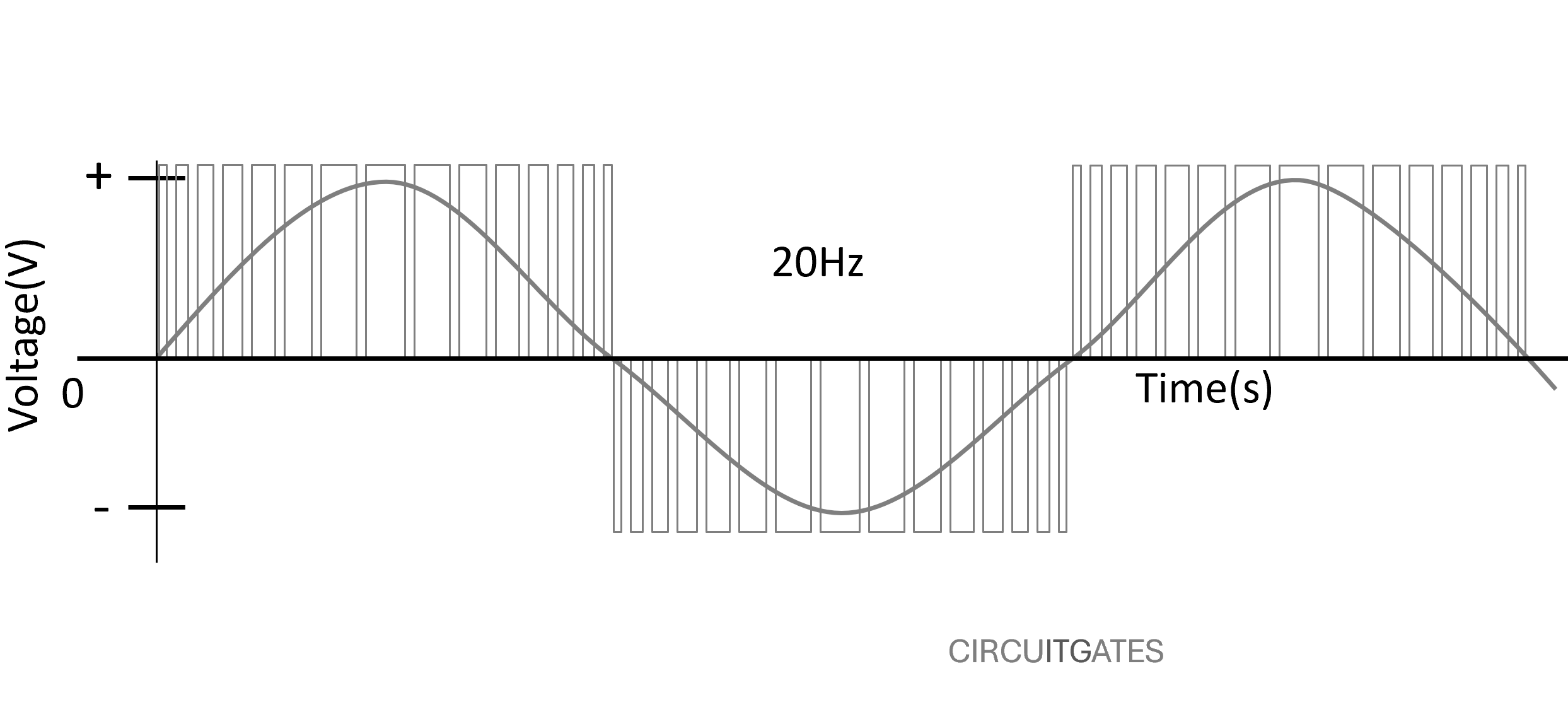
VSD Power and Control circuits
The power circuit of most VFDs, consist of eigther three phases or single phase and the earth wire connected to the power input of the VSD (L1/L, L2/N, L3).
The output part of the power circuit from the VFD (U, V, W) consists of three phases and earth wire connected to the electric motor.
The control circuit of the VFDs consist of digital inputs, analogue inputs, digital outputs, analogue outputs, relay outputs, serial communication protocols and more that enable sending and receiving of different types of signals that anable the control of VFDs.
For inputs, outputs and serial communication protocols to control the VFD, there are VFD parameters that need to be set (programmed) first that correspond to these inputs, outputs and serial communication protocols.
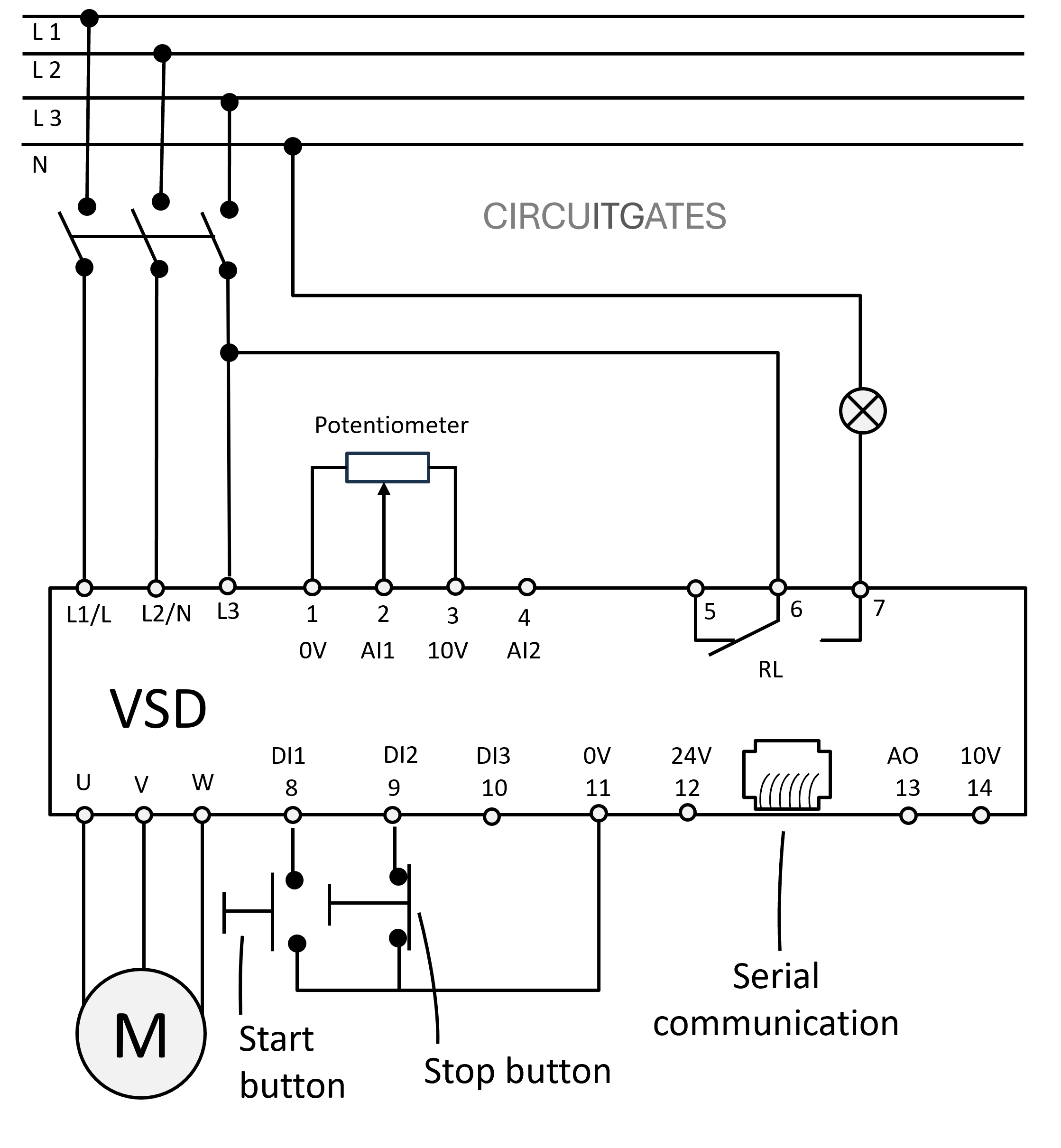
Digital inputs - DI1, DI2, DI3
These are inputs that receive individual (discrete) signals that are either on or off (binary 0 or 1), from devices such as start and stop buttons.
When parameters corresponding to these digital inputs are set, they can be used to control various functions of the VFD such as switching ON and OFF the VFD, changing direction of the VFD and more.
Analogue inputs - AI1, AI2
These are inputs that receive continuous signal such as current (4-20mA) or voltage (0-10V) from devices like potentiometer and sensors.
When parameters corresponding to these analogue inputs are set, they can be used to control various functions of the VFD such as the VFD output frequency.
Digital outputs (Relay outputs - RL1, RL2 )
These are outputs that sent individual (discrete) signals that are either on or off (binary 0 or 1) to devices like indicator lamps external control relays and solenoid valves.
Digital outputs are used to send signals to external devices. In VFDs we often find relays (RL) used as digital outputs.
VSD relays can be programmed to close if the VFD is switched ON, anabling devices connected through them to operate like indicator lamps that give a running signal of the VFD.
Analogue outputs - AO
These are outputs that sent continuous signal such as current (4-20mA) or voltage (0-10V) to devices like analogue meters.
Just as digital outputs, the analogue outputs are used to send out signals to external devices. In most cases VFD analogue outputs are used as inputs to other devices like PLCs.
Serial communication protocols
Serial communication protocols enable the use of PLCs and remote HMIs (touch screens or screens with a keypad usually installed on the panel doors containing VFDs) to control VFDs.
Some common types of serial communication protocols include fieldbus, ethernet and wireless.
VFD Control and Programming
VSD programming involves the setting of VFD parameters for the VFD to suite specific electric motor applications. To set parameters for VFDs, you need to have its user manual since different brands of VFDs slightly differ on how they are programmed.
There are several VFD parameters that need to be set so that the VFD match the specific electric motor applications and also to anable the operation of the VFD through digital inputs, analogue inputs, serial communication protocols and more.
Some of the areas where parameters need to be set include:
Starting and stoping of the Electric motor
In VFDs, the electric motor can be started using the VFD Keypad (default), PLC (through serial communication protocol or digital inputs) and external start and stop buttons (through digital inputs).
The VFD needs to be programmed according to which of the previous methods of starting and stopping is going to be used to start and stop the electric motor.
In the previous VFD power and control circuits diagram, we have used the external start and stop buttons connected through digital inputs.
Frequency Control
Just like the previous starting and stopping of the electric motor, the frequence of electricity going to the electric motor can be controlled or adjusted through the VFD keypad, PLC (serial communication protocol or analogue inputs) and potentiometer (through digital inputs).
The VFD needs to be programmed based on which of the previous references for adjusting the frequence of the electric motor is going to be used.
In the previous VFD power and control circuits diagram, we have used the potentiometer connected through digital inputs to adjust the frequence.
Other VFD important parameters
Minimum frequency - The VFD needs to be set the lowest frequency at which the VFD can operate the electric motor.
Maximum frequency - The VFD needs to be set the highest frequency at which the VFD can operate the electric motor.
Acceleration time - The VFD needs to be set the time, the electric motor takes to reach the setpoint speed from a lower starting speed.
Motor current limit - The VFD needs to be set the maximum current that it will alow to flow to electric motor.
If you have made it this far, thanks for reading. Please consider subscribing to our YouTube channel for more electrical tutorials.